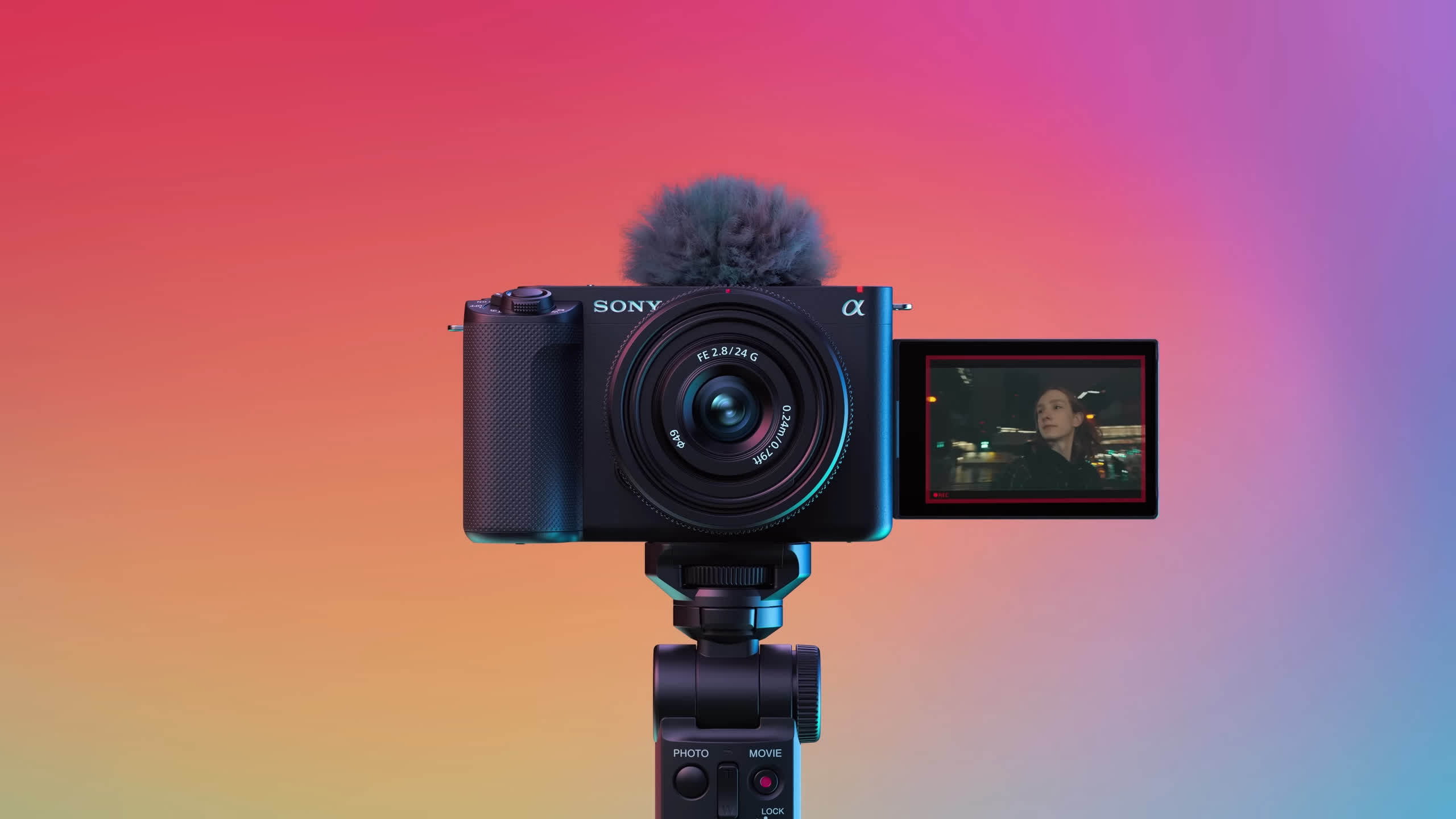Something to look forward to: The new flagship of Sony's vlogger-targeted line of cameras uses artificial intelligence to automate certain tasks, letting solo content creators do things normally requiring a camera crew. Expecting vloggers to prize portability, the ZV-E1 also claims to be the world's smallest and lightest full-frame interchangeable lens camera.
Sony recently unveiled the ZV-E1, the flagship of its vlogger-focused ZV series. Shipping in May, the full-frame camera with interchangeable lenses should give users a wide range of powerful photography features in a small package.
Starting at $2,200, the 12.1-megapixel camera features a dedicated AI processing unit and the same AI-powered features available in the $3,900 Alpha 7R V. The technology could help vloggers and other content creators working alone take smooth and stable-looking photos and videos that usually need teams.

Using subject form data, the processor can recognize human faces, poses, and other features for improved tracking, stability, and focus, even when subjects face away from the camera. For example, it can recognize body parts on a person facing away and prepare to focus the image on the face the instant they turn around.
The functionality works for still photos and videos, freeing vloggers to focus on other parts of the creative process. It can also recognize and track other subjects like planes, birds, insects, and cars. Furthermore, the AI can switch the direction of the camera's microphone to face the subjects it sees, optimizing the audio reception.
Sony didn't say what the ZV line's AI is trained on, so it's unclear how the features affect a camera's output. Samsung recently came under criticism when testers suspected the AI-assisted camera in the Galaxy S23 of using generic images of the moon when zooming in on it. However, AI may affect other objects differently than something as monolithic as the moon.
The Verge's review (above) praised the ZV-E1's AI features, demonstrating the camera's advantage over the iPhone 14 Pro when focusing on people. It also showed how Sony's product captures lighting more realistically than Apple's, although the smartphone could catch up by improving how it handles shadows. However, The Verge criticized both companies' auto-framing methods.
The outlet's biggest knocks against the ZV-E1 involve vertical video and Sony's photo transfer software. It's easier to take vertical video on an iPhone, and Sony's companion iOS app currently has low user reviews. Furthermore, the cheaper Alpha 7C might be a good-enough entry-level full-frame camera for many users. The extra few hundred dollars for the ZV-E1 mainly goes toward its AI functionality.
One last thing to note is that while Sony's upcoming camera takes 4K 60Hz video out of the box, a future update will enable 120Hz recording.